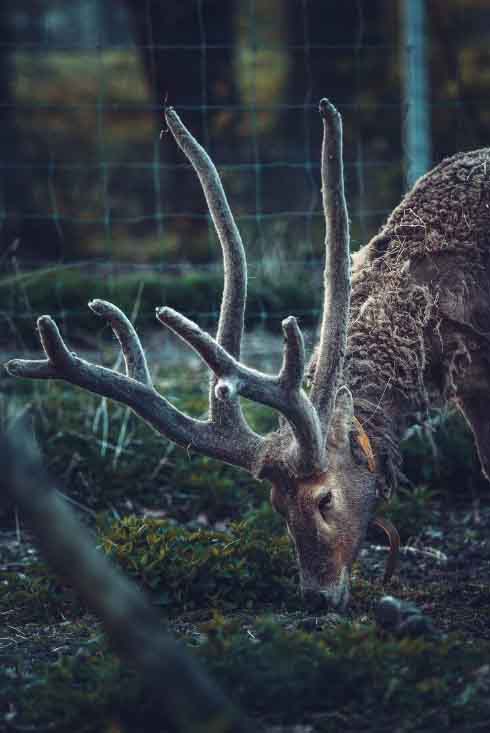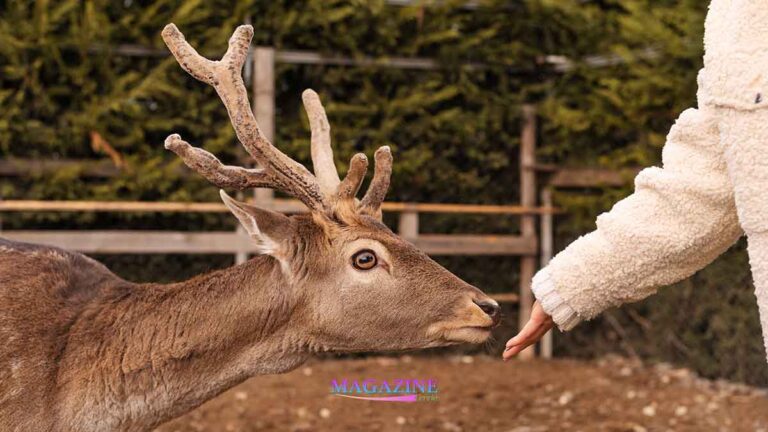What is Zombie Deer Disease?
Zombie Deer Disease is a catchy nickname for a real and concerning prion disease called Chronic Wasting Disease (CWD). It affects deer, elk, moose, and caribou, causing progressive brain degeneration and neurological problems. Let’s delve deeper into what this disease entails:
Table of Contents
Zombie Deer Disease Symptoms : A closer look

Zombie Deer Disease, more accurately known as Chronic Wasting Disease (CWD), presents with a range of symptoms that evolve over time. Let’s break down the signs you might see in an infected deer:
Early Stage:
- Subtle changes in behavior: These can be hard to spot, but include becoming more reclusive, losing interest in interactions with other deer, or acting abnormally aggressive.
- Physical changes: Look for a decline in body condition, such as weight loss, a dull coat, or drooping ears.
- Changes in movement: Infected deer may exhibit tremors, unsteady gait, stumbling, or difficulty holding their head up.
Later Stage:
- Neurological decline becomes more pronounced: This manifests as drooling, excessive licking, confusion, and a vacant stare.
- Movement issues worsen: Expect significant stumbling, incoordination, and difficulty standing or walking.
- Loss of fear: Infected deer may lose their natural fear of humans and approach people or buildings.
Important Note:
These symptoms can vary in severity and timing, and not all infected deer will display every sign. Early detection is difficult, which is why CWD poses a significant challenge for wildlife management.
Additional Points:
- Carcasses of infected deer can remain contagious: CWD prions are incredibly robust and can persist in the environment for years. Contact with infected tissues or bodily fluids is a potential transmission route.
- No cure or vaccine exists: CWD is a fatal disease with no known treatment or preventative measure for individual animals.
Understanding these symptoms is crucial for hunters, wildlife officials, and anyone who interacts with deer populations. By staying informed and taking necessary precautions, we can help mitigate the spread of CWD and protect both wildlife and potentially ourselves.
See more : Stiff Person Syndrome: Symptoms & Care Tips for 2023
Zombie Deer Disease Cause
The culprit behind Zombie Deer Disease, officially known as Chronic Wasting Disease (CWD), isn’t a virus or bacteria, but something even more sinister – prions. Let’s unravel the mystery:
Prions: These are misfolded proteins, unlike their properly folded counterparts that carry out necessary functions in the body. In the case of CWD, a specific prion protein called PrP becomes misshapen, triggering a deadly chain reaction.
The Domino Effect: When healthy PrP proteins come into contact with misfolded CWD prions, they’re also warped into the abnormal shape. This domino effect causes a cascade of misfolding, leading to the accumulation of prions in the brain and ultimately, brain degeneration.
How Deer Get Infected: The exact routes of CWD transmission are still being studied, but the following are believed to be key players:
- Direct contact: Infected bodily fluids and tissues, including saliva, urine, and feces, can transfer CWD prions to healthy deer. This can happen through nose-to-nose contact, fighting, or scavenging on carcasses.
- Environmental contamination: Prions can persist in soil and vegetation for years, potentially infecting deer that browse in contaminated areas.
- Transplacental transmission: In rare cases, CWD prions can be passed from infected mothers to their offspring.
The Mystery Remains: While these are the current understandings, researchers are still probing deeper into CWD transmission dynamics. Potential routes like airborne transmission or the role of certain environmental factors are being investigated.
Zombie Deer Disease in Humans
The question of “Zombie Deer Disease in Humans” (more accurately Chronic Wasting Disease, or CWD) is a complex and important one with no simple answer. Here’s what we know so far:
Current status:
- No confirmed cases: To date, there have been no documented cases of humans contracting CWD.
- Similarities to other prion diseases: CWD belongs to a family of prion diseases, including Mad Cow Disease (BSE) in cattle, which did transmit to humans through contaminated beef.
- Cause for caution: The similarities between CWD and other prion diseases raise concerns about potential human transmission risk, though the specific mechanisms are still unclear.
Risk factors and preventive measures:
- Exposure: The primary risk factor for humans would be exposure to CWD prions, potentially through:
- Consuming venison from infected deer: While cooking may not completely eliminate prions, avoiding high-risk tissues like brain and spinal cord is recommended.
- Direct contact with infected tissues or fluids: Hunters and wildlife officials handling deer should wear gloves and take proper precautions.
- Environmental contamination: Though less likely, contact with contaminated soil or vegetation in areas with CWD could pose a risk.
- Preventative measures: The focus currently lies on:
- Monitoring and testing deer populations: Early detection and containment of CWD in wildlife can help reduce the risk for humans.
- Raising awareness: Educating hunters, wildlife officials, and the public about CWD and safe practices is crucial.
- Research: Ongoing research aims to understand CWD transmission, develop diagnostic tools, and explore potential preventive measures for both humans and animals.
Why do they call it zombie deer disease?
The nickname “Zombie Deer Disease” for Chronic Wasting Disease (CWD) is a catchy and attention-grabbing term, but it also evokes specific images and connotations that are both accurate and misleading:
Accurate aspects:
- Neurological decline: CWD causes progressive brain degeneration, leading to behavioral changes and loss of coordination, similar to some depictions of zombies.
- Loss of fear: Infected deer may lose their natural fear of humans, potentially approaching people or buildings, another eerie resemblance to zombie lore.
- Persistence of the threat: Prions, the cause of CWD, are incredibly robust and can remain infectious in the environment for years, contributing to a sense of long-lasting danger.
Misleading aspects:
- Transmission: Unlike fictional zombies, CWD doesn’t spread through bites or direct contact. The primary transmission routes are bodily fluids and tissues, contaminated environments, and potentially mothers to offspring.
- Aggression: While infected deer may lose their fear, they don’t typically exhibit the aggressive behavior commonly seen in zombie portrayals. Their movements become clumsy and uncoordinated due to neurological damage.
- Mortality: Zombies are often depicted as undead, but CWD is a fatal disease for deer. Infected animals eventually succumb to brain degeneration and die.
Overall, the “Zombie Deer Disease” nickname captures some of the unsettling aspects of CWD, particularly the neurological impact and potential threat to humans. However, it’s important to remember that this is a complex and ongoing scientific issue, and the name can simplify and even sensationalize the reality.
Using the scientific term “Chronic Wasting Disease” provides greater accuracy and avoids unnecessary fear mongering. However, the “Zombie Deer Disease” nickname undeniably draws attention and sparks public interest in this important issue.
Ultimately, the choice of terminology is a matter of context and audience. When aiming for scientific accuracy, “Chronic Wasting Disease” is preferred. But when the goal is to raise awareness and attract attention, the evocative “Zombie Deer Disease” can be a powerful tool, as long as it’s accompanied by accurate information and realistic understanding of the disease.
Is Zombie Deer Disease a threat to humans?
The potential for Zombie Deer Disease, officially known as Chronic Wasting Disease (CWD), to affect humans is a complex and evolving issue. While there have been no confirmed cases of CWD transmission to humans, due to similarities with other prion diseases and the ongoing study of CWD.
The environmental impact of Zombie Deer Disease
While the potential threat of “Zombie Deer Disease” – or Chronic Wasting Disease (CWD) – to humans grabs headlines, its environmental impact should not be underestimated. This complex prion disease has the potential to cause significant disruption to ecosystems and wildlife populations.



